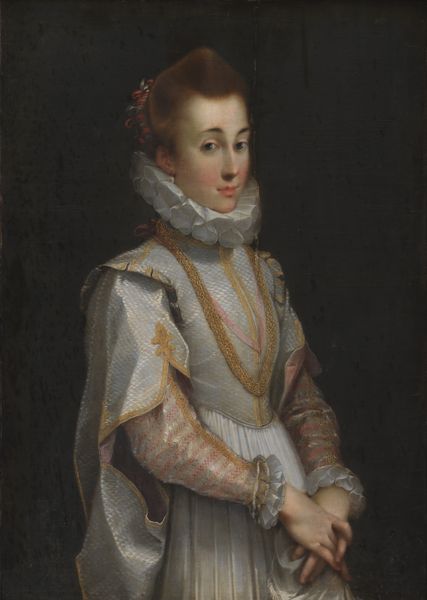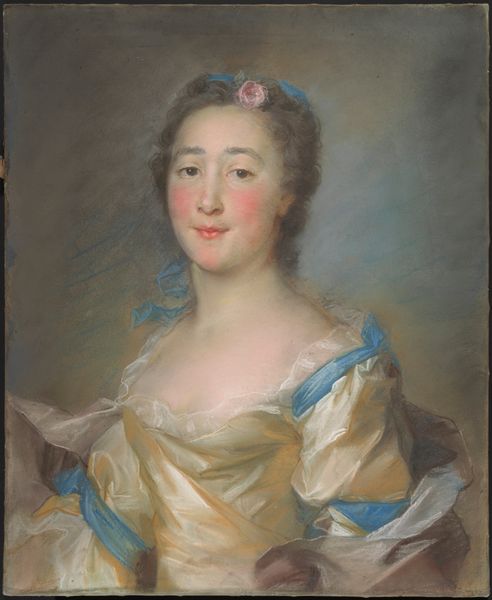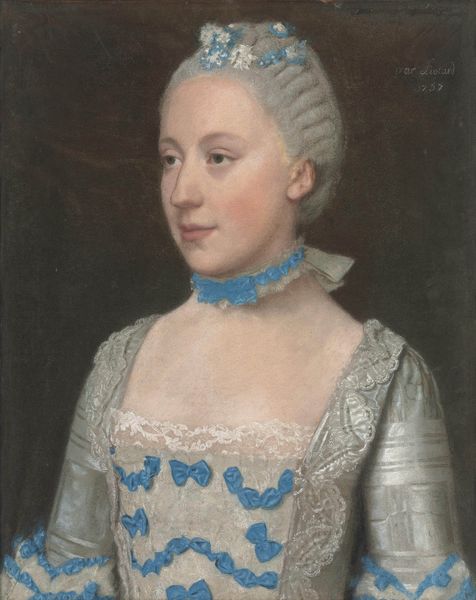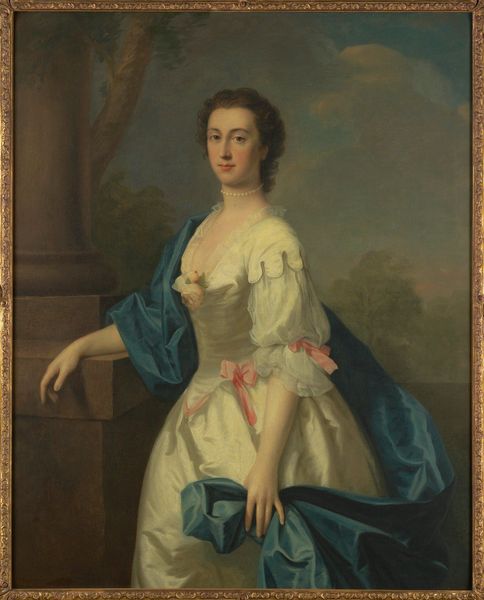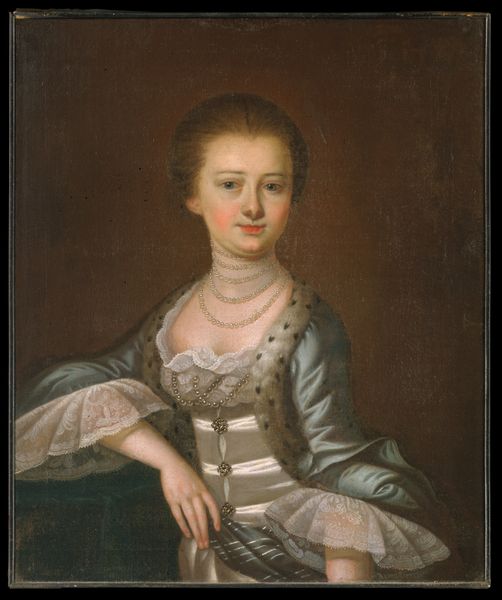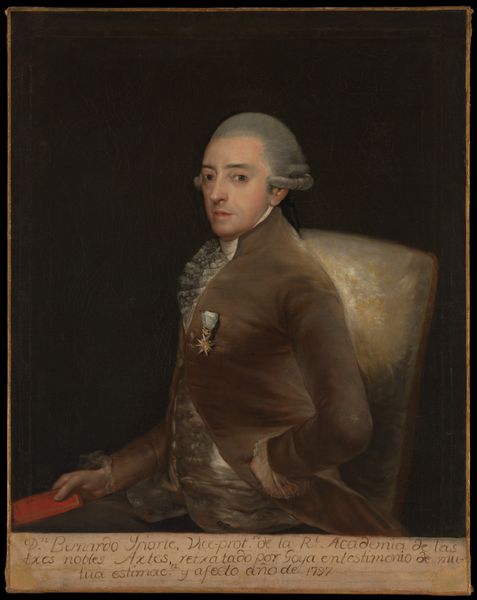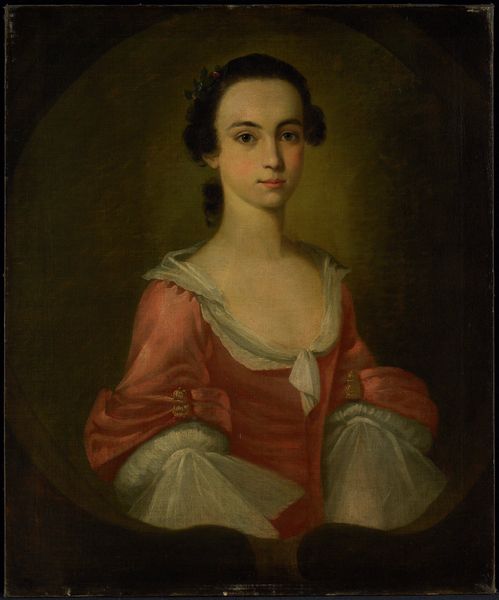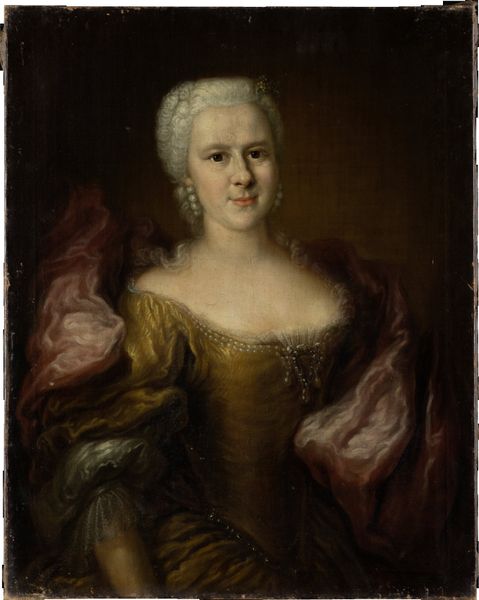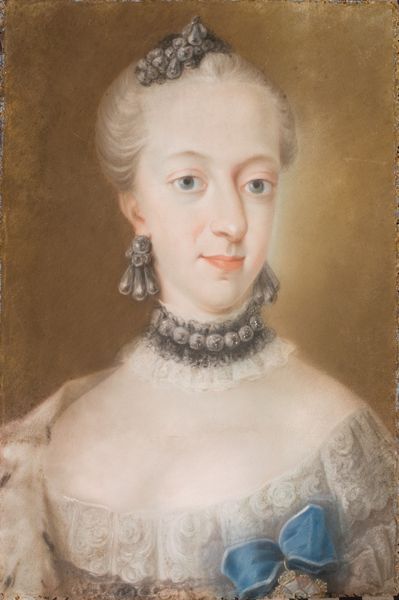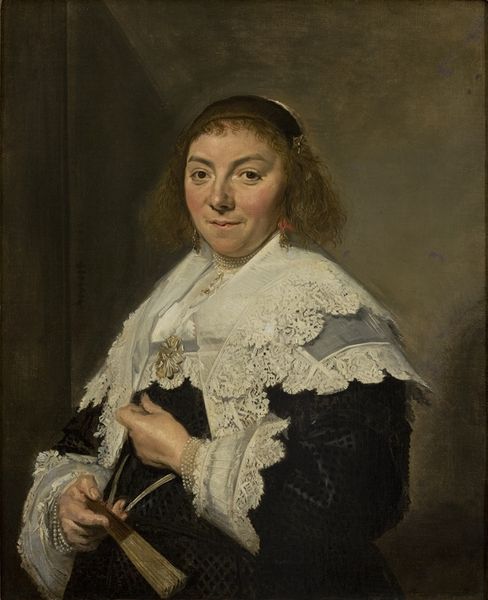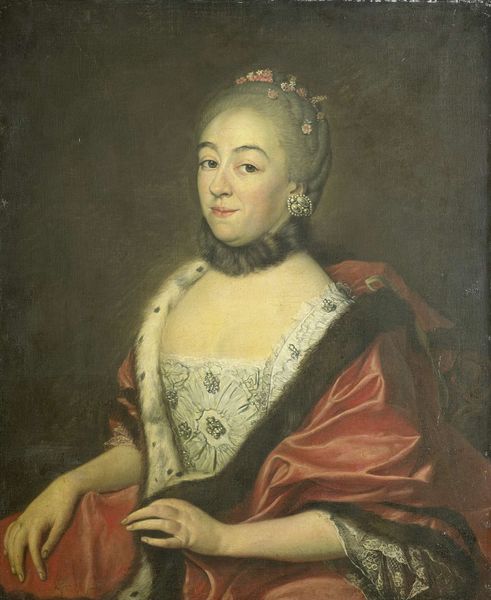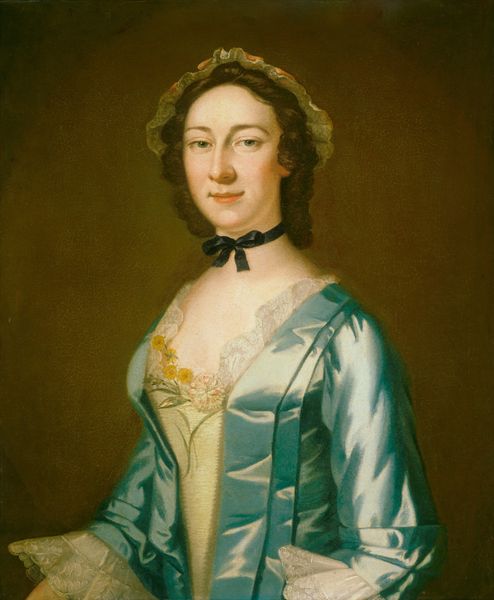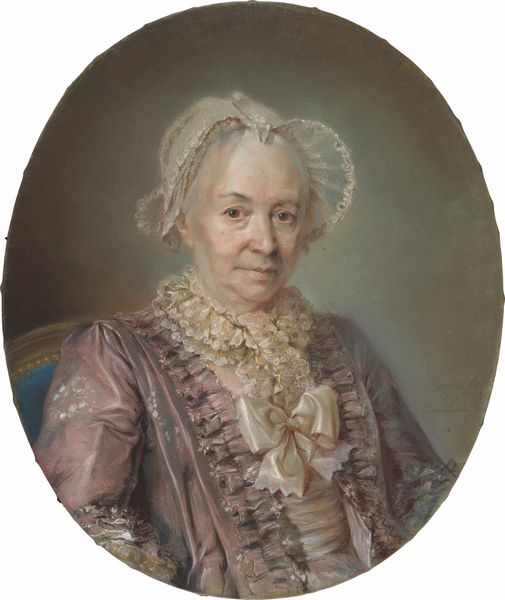
painting, oil-paint
#
portrait
#
painting
#
oil-paint
#
genre-painting
#
rococo
Dimensions: 30 x 24 3/4 in. (76.2 x 62.9 cm)
Copyright: Public Domain
Editor: So here we have Jeremiah Theus’s "Mrs. Gabriel Manigault" from 1757. Painted with oils, it’s currently residing at The Met. There's an almost stark simplicity to it, even given the lace and sheen of her dress. It feels… restrained. What do you see in this piece? Curator: I see a portrait deeply entrenched in the complexities of colonial America and the Rococo style, one that can seem simple until we begin to unpack its relationship with power and identity. We might consider the gaze she directs at the viewer. Does it project authority? Or does it reveal a certain vulnerability, considering the limited agency women, particularly white women of wealth, possessed during this time? Editor: That’s interesting, I hadn't thought about the power dynamic within the portrait itself. The limited agency of women, even wealthy women… Curator: Precisely. Think about what her attire signals. The expensive fabric, the lace trim— these are not merely decorative elements. They signify wealth, status, and the family’s position within the socio-economic structure of colonial society built on dispossession and enslaved labor. It’s also Rococo, which, in its focus on elegance and surface appeal, tends to obfuscate other underlying aspects of colonial rule. Editor: So, are you suggesting the portrait, with all its beauty, inadvertently masks the harsh realities of the time? Curator: It's both masking and revealing. The very act of commissioning a portrait like this speaks to a desire for self-preservation, for shaping a particular narrative. What aspects of reality get obscured through the seemingly objective act of artistic representation? How do such paintings reflect or distort the realities of power? Editor: Wow, I definitely have a different perspective on it now. It’s much more than just a portrait; it’s a loaded document. Curator: Indeed. It requires a careful consideration of not only what is shown, but what is intentionally and unintentionally concealed. These objects speak volumes if we lend an ear, and a critical eye.
Comments
No comments
Be the first to comment and join the conversation on the ultimate creative platform.
